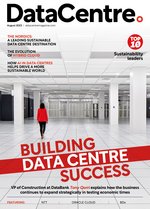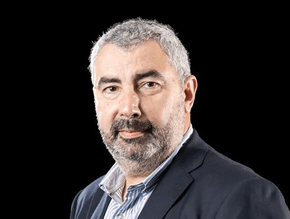The Nordics: a leading sustainable data centre destination

There are plenty of factors that come into play when it comes to choosing a site for a data centre - whether it be network latency, plans for expansion, natural disaster risks and workforce. And with these facilities emitting huge volumes of power, that comes with a price to the environment and a significant carbon footprint. There’s no doubt about the fact that sustainability is growing ever important to the industry - and at a time where data centre demand is also booming, sustainability remains at the top of the agenda. Sustainability solutions can be applied to existing sites, but when building new facilities, green initiatives come from the ground up - and many considerations are made before ground is broken.
Location is key. Data centres must be located in well-connected areas with access to many carriers and multiple redundant fibre connections to major bandwidth providers. But when it comes to sustainable locations - there’s no place like the Nordics. Well, at least that’s the view of atNorth.
And with the likes of Helsinki boasting unprecedented growth and demand for data centres and emerging as a top destination for major, long-term investments, as well as Stockholm and surrounding Sweden pinpointed as prime real estate for its access to renewable energy, great connectivity and an infrastructure that allows delivery of services, others are following suit and eyeing up the Nordics as a data centre hotspot.
The Nordics - a perfect data centre location choice?
“We focus on the Nordics because of the characteristics that the Nordics offer for co-location or data centre operations. On one hand, those characteristics are the climate and the availability of renewable energy and low carbon energy, but on the other hand, it is about where we can scale our operations,” atNorth’s Chief Sales Officer Gísli Kr details.
Starting up the company in Iceland, atNorth has expanded into both Sweden and Finland, and will soon be present in all Nordic nations - with a goal of being a pan-Nordic data centre company on the belief that the Nordics offer world leading conditions for data and operations.
Which country boasts the best data centre locations?
Well that depends on their specific needs. Kr explains that there isn’t a one-size-fits-all approach when it comes to picking a particular data centre location, but continues to strongly vouch for the region as a whole as a leading destination - and other data centre operators are catching on.
“Now, if we want to start looking at specific countries within the Nordics and which one is the best, then that is often dictated by the needs of the customer,” he explains. “So the best country might be Iceland for some companies because they focus on low TCO and extremely predictable power prices - but that might not be for the next company the best fit as they would need more flexibility to markets.”
Nordic data centre locations aren’t always as remote as they seem - for example, Stockholm is one of many areas considered major connectivity hubs with access to other markets.
And the firm believes that other important factors to data centres and their companies' success don’t have to be compromised by putting sustainability and a Nordic location at the forefront - if anything, they will only be further enhanced.
Companies expanding into Nordic nations
“We see the whole spectrum of companies now looking to deploy data centre capacity in the Nordics. Everything from companies coming from more southern regions in Europe and Asia and the US looking to deploy everything from traditional IT workloads to the most high performance computing or AI workloads that you know that you can find,” he illustrates.
“Obviously companies that are considering the move are often focused on the bottom line and that the TCO of the project is optimised. The Nordics offer, I think, the best TCO in the world when it comes to data centre operations based on the power efficiency and power pricing.
“We are touching some of the most demanding workloads in the world, that is what we are seeing in our portfolio. Most of our customers are requesting scale and have the option to scale out their facilities. Hence that is a big criteria for us. Obviously we look towards practicalities such as how easy it is to get to the location and evaluating each location. Those are the low-level practicalities that we need to be able to efficiently operate at data centres.
“As a company, we have a pretty good and clear location criteria already in our mission statement, which is the Nordics. This is where we believe the data centres of the future will reside.”
Customer attitudes to sustainable locations
Kr says that when he first entered the industry, putting power production into the context of CO2 output was far from people's minds. “People did not really relate to how something you do on the internet would result in carbon output,” he reminisces. “I think the general consensus is that this is understood today. We understand that the power production can result in carbon footprint.”
He says one of the hot topics over the last 12 to 18 months is the status of European power markets - how we produce energy that we turn off - gas - and how that impacts power prices to consumers despite many markets claiming to be almost powered solely by renewable energy.
“I think we are closer and are more knowledgeable about how we power data today, how we power data centres and our life online - which is consuming an increasingly big portion of our existence.”
He also feels that recently steps have been taken to enable data centres to participate in a circular economy. atNorth’s Stockholm data centre, for example, sees around 85% of the power it consumes recycled. Compute is transformed into another form of energy - heat - and mitigated back to the central heating system.
“This, in my mind, is a major step and is a prime focus for our company, is to participate in the circular economy. In our mind this is part of respectful use of resources. And in particular, this is important when you deal with workloads that are extremely power hungry.”
And although Kr gives a comprehensive overview of the data centre outlook in the Nordic region, he notes that the landscape is constantly changing.
“I would have answered [these questions] differently not more than 12 months ago because things have been evolving very fast in Nordics. I believe that we are in the early stages of the Nordics becoming the European hub of data centre operations. The Nordics will become one of the leading data centre markets worldwide.
“I believed that as well 10 years ago. But I feel it's now becoming tangible.”







